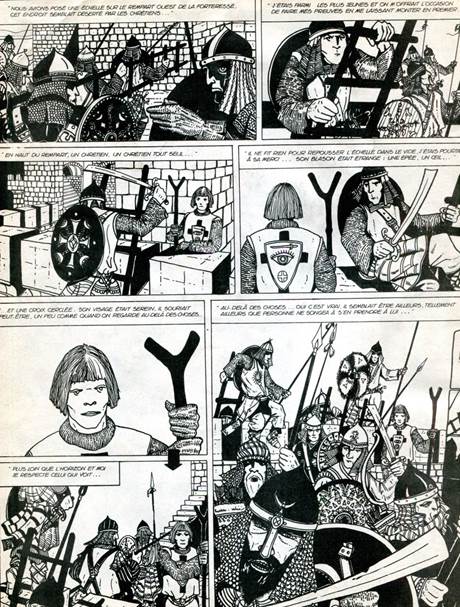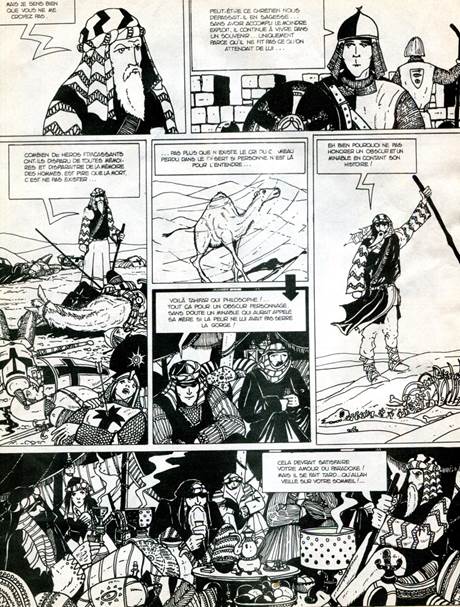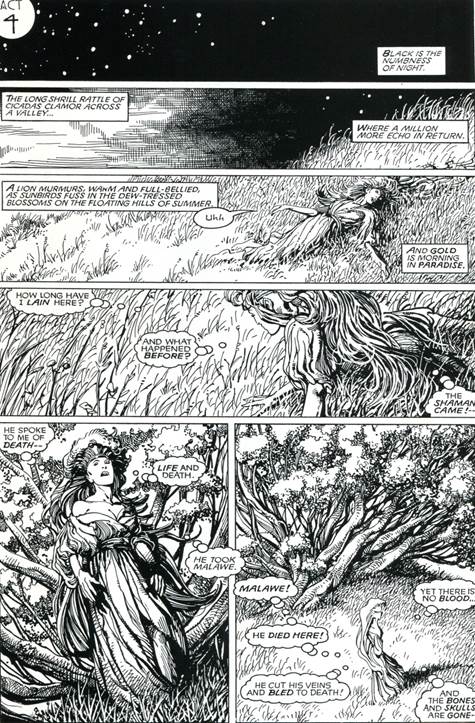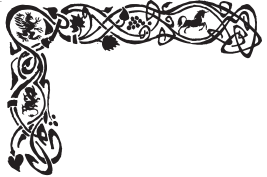The faith of our social-media friends in science for cures is truly heartwarming to behold. They always seem to assume you toss the big fat $ at a problem and the solution is round the corner. What is round the corner is a neutered world with human symbiots of a geometrical AI, the soulless Apollo, something akin to the ending of CL Moore’s Heir Apparent.
Like our friends the museum curators – or self-appointed sanctifiers of public morals – they are not aware of alien incursions into their brains. To them it is a progressive belief and, if not this year, will happen next or the year after. So thought the Heir Apparent on the way to his beautiful and terrible doom. Geometrical beauty; the seductive human-headed serpent. They may have never heard of the Sirens. Beauty and order; Apollo triumphant; the absolute beauty of a soulless statue; the death of freedom and the reign of Anti-Life (see Pictorial 9 Forever People #3).
Rather than being the heirs of beautiful geometry, a form of living death and degradation, we are the heirs apparent of hunters, fishers; of men and women who run and dodge, who clamber and gather, who fight and sustain damage, swim and throw the discus. Heirs of Olympians of yore. Heirs to Man the legendary adventurer and teller of tales.
Now, here’s a question. Which is the reality; a life of comfort as a human symbiot, or a life that is known only as legendary history? Or, again, is legend a conquest of death? Since a human symbiot is the death of freedom and the death of psyche, it is also the death of Man the adventurer of legend.

 Chroniques du Sable, Gilles Nifenecker, Pilote 65 bis 1979 - The story of a Saracen who establishes a legendary oasis for an unknown knight - on a personal footnote these copies of Pilote are invaluable as I searched online and found no reference to Nifenecker. I was given them by Perrine Sandrea (Alternates 6) who subsequently disappeared; she is my personal legend!
Chroniques du Sable, Gilles Nifenecker, Pilote 65 bis 1979 - The story of a Saracen who establishes a legendary oasis for an unknown knight - on a personal footnote these copies of Pilote are invaluable as I searched online and found no reference to Nifenecker. I was given them by Perrine Sandrea (Alternates 6) who subsequently disappeared; she is my personal legend!
“How many failed heroes have disappeared from memory.. and to disappear from men's memories is worse than death, it's not existing. No more than the cry of a lost camel in the desert if nobody is there to hear it”.
The question is; in a world of belief is the legend stronger than the death? To “them” in the modern world this must seem like fantasy-land. By “them” I mean those like Musk, of the Tesla-stunt, who have the complete confidence of their convictions. This is the tell-tale sign of the false Apollo; those who are building a future on facts and not on belief. In order to understand why this should be so I urge you to read CL Moore’s Julhi, which tells of parallel planes of non-Euclidean geometry (like something out of Dr Strange).
This is a fantasy, because in reality there is no non-Euclidean geometry – or is there? In terms of “fact” there is only Euclidean geometry, but there are less factual geometries. The colloids of a living cell; the watery medium of a womb; the benign/malign influence of the moon; the wavy tendrils and roots and fungi of a swamp.
What “they” mean by facts are precise, geometrical facts of proven worth. The future they are building has the sureness of geometrical conviction. You can only build rockets with Euclidean geometry, so that is what they will be doing. In other words, they are building something as precise as clockwork – and that is a belief - the certainty of clockwork. Everything is a belief, Anti-Life is a belief (see prev.)
What they don’t believe in is the “fantasy” of non-Euclidean geometry – which only means that it’s not precise. It’s completely imprecise – that is what it is. Without this other reality they are building very precise nothingness. Geometry is a type of nothingness because of these other, non-Euclidean geometries that run parallel – the more they believe in precision the less is actually there.
In short (!) a geometrical future is a parallel future which is always running parallel to reality. Reality is only partly geometrical. A human egg, an ovum - if it was geometrical it would be a robot. The other side of reality is Dionysus; pure expression and fortune.
Legend tells us humans what we are psychically and what our powers are physically. By contrast, facts tell us what a geometrical universe is - the death of psyche and adventure.
Somehow, despite the lovely languor of the place, despite the sweet bitterness of the Temple fountains and the sweeter bitterness of the kisses that were his for the asking, he could not drive from his mind the vision of those far mountains veiled in rising haze.. like some sleeper arising from a lotus-dream his mind turned more and more frequently to the desire for action, adventure, some other use for his danger-hardened body than the exigencies of sleep and food and love. (Northwest of Earth, Scarlet Dream, Omnibus page 222)
You could almost say “the facts” of sleep and food and love. Northwest is willing to risk his life in the belief that something lies beyond the land of mist and ennui to which he is exiled. The question is, is belief a greater source of power and valour than fact? Or, again, belief conquers the ennui of life.
A belief is often a conviction that there must be a type of balance, that you can’t get something for nothing. In primitive societies the practice of sacrificial rites to placate the gods of abundance is almost hackneyed. There is a naïve strength to these that BWS caught in Adastra in Africa (1999), where the implacable Malawe takes his own life rather than bow to the new goddess.

© BWS 1999
As some may recall, Adastra is the third instalment of Lifedeath, featuring Ororo (Uncanny X-Men 198) – the theme of apparent suicide was too strong for the powers that be, and BWS ten years later converted the story to his own registered character. The naivety of such beliefs is very telling – so, are they false? In terms of anthropology they’re communal; they strengthen the commune, and here we get into a legendary theme as ancient as Homer! The epic hero who faces death with cunning and courage, or even invades his kingdom as with Orpheus.
That doesn’t necessarily answer the question, so put it another way. BWS’s story is about a balance of life and death, which can be seen like a brutal, back-to-nature parable. But, existentially, there is no way out of that dilemma. The gods of the Greeks are of both life and death because we live in both at the same time (or used to).
BWS’s story touches on legend – which is related to sacrifice – and there is a very big question hanging in the air. Is the legend stronger than the death? In a world of no belief there is no legend or, at least, people search rather desperately for some legend – such as Howard! When I say there is “no belief” I mean no belief in balance; there is still belief in Anti-Life, or precise geometry.
To believe in the legend of life you have to believe in death – and this is the theme that BWS catches well in the tree of life and death (last panel). It’s not precise, but it’s existentially true. The alternative is mere existence, Anti-Life. That is, I would opine, the “grimness” of Howard’s poetic prose – to stir and give meaning to mortality.
The logical world is actually completely illogical when it comes to balance, which is why it’s a maze of cures and “effects”. Reason ($) applied to pleasure (goods). The question is, do facts apply to a geometrical universe (of future AI) and not to the universe that is a balance of different things? A universe of imprecision, rhythm and counter-rhythm, life weaving into death, the leaves that drift, tall-grass in the savanna breeze.
What “they” call the electric-green future is simply the expansion of geometry (infrastructure) with renewable energy. What “they” want is to have the universe of the $ and just apply it to an electric-green future. The problem is, there is no belief. There’s anti-belief or belief in Anti-Life. A legend has to encompass life and death because that is the reality; otherwise you have bare existence, as these tales seem to attest.
Home







